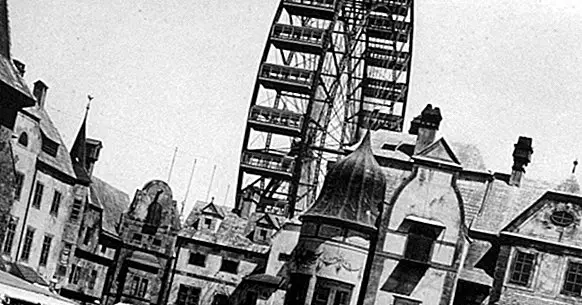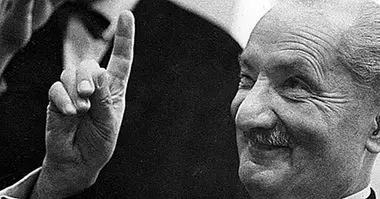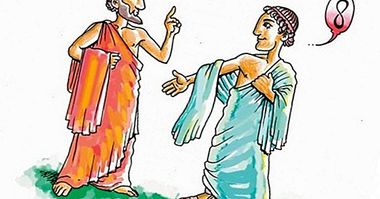What was the Vienna Circle? History of this philosophical collective
Scientific research has allowed throughout history the development of a large number of technologies and the understanding of a great diversity of phenomena that make our day to day something easier. Physics, Chemistry, Mathematics, Biology, Medicine, Psychology ... all of them have been developing with the passage of time. But all of them have a common origin, an origin that goes back to antiquity and that starts from the search of the human being for an explanation for the mysteries of life: The philosophy .
And like the previous ones, philosophy has also evolved with the times, affecting in turn the scientific development. These advances and changes have generated a great diversity of paradigms, some of which have been forged and discussed in different circles of thinkers. Perhaps one of the best known of modern times was the Vienna Circle , which we are going to talk about throughout this article.
- Related article: "How are Psychology and Philosophy alike?"
The Vienna Circle: what was it and who formed it?
It receives the name of Circle of Vienna an important scientific and philosophical movement that was founded in 1921 by Moritz Schlick in the Austrian city that gives this group its name. This movement arose with the purpose of forming a discussion group of scientific topics in an informal way, although it would end up being the main ideological nucleus of logical neopositivism and the philosophy of science.
This movement counted with great figures of the science coming from very diverse disciplines, being between them (besides the own Schlik) Herbert Feigl, Freidrich Waisman, Rudolf Carnap, Víctor Kraft, Otto Neurath, Philipp Frank, Klaus Mahn, Carl Gustav Hempel, Felix Kaufmann or Alfred Ayer. Many of them were physicists, mathematicians or professionals who studied different branches of science but that would end up deepening in philosophical aspects.
Although it would be born in the 21 it would not be until 1929 when it would realize its first official manifesto, titled "The scientific vision of the world", in which they would propose the philosophy like main instrument to generate a common language to the different scientific disciplines, relegating it only to this function.
The movement focused on a total empiricism that It was based on advances in logic and physics and focused its methodology on the inductive method . Another of the main aspects for which it is characterized is its profound rejection of metaphysics, derived from its inductivism and empiricism, considering it alien to the reality of the phenomena. Their meetings, held on Thursday nights, would end up germinating in the so-called logical neo-positivism.
- Maybe you're interested: "Karl Popper's philosophy and psychological theories"
Main philosophical contributions
The vision of the reality and the own science of the members of the Circle of Vienna is what would end up being called logical neopositivism. This philosophical-scientific position proposed empiricism and induction as main elements for scientific study and assumed the search for a unit of scientific language under the premise that the different disciplines are all part of the same system with the possibility of unification.
The movement proposed a readjustment of the sciences to seek common fundamental laws from which they later deduce those of each of their branches. For this, the use of a single method, the logical analysis of language, was essential, with which, based on the use of symbolic logic and the scientific method, we sought to avoid false statements and to be able to generate a unified knowledge of the world.
For them, the unresolved problems were only because what they are trying to solve are pseudo-problems that must first be transformed into empirical problems . As we have said before, this analysis would correspond to the mother of all sciences, philosophy, which should not seek but clarify scientific problems and statements.
With regard to the statements, they considered that there is no valid knowledge unconditionally derived from reason or a priori, being only true the statements based on empirical evidence and logic and mathematics. In this sense they enunciated the principle of demarcation, in which a statement will be scientific if it can be contrasted and verified by objective experience.
Curiously, no method was considered invalid (even intuition was valid), as long as what resulted from it could be empirically contrasted .
The Circle of Vienna touched a great amount of disciplines, happening through the physics (being this possibly the most enhanced and considered), the mathematics, the geometry, the biology, the psychology or the social sciences. In addition, it was characterized by its opposition to metaphysics (as well as theology), considering that it was based on non-empirical or verifiable data.
The dissolution of the Circle
The circle of Vienna offered interesting contributions and advances both in the field of philosophy and in that of the various branches of science, as we have seen previously. However, a few years after forming it would end up dissolving due to the historical events that happened during the time. We are talking about the rise to power of Hitler and Nazism .
The beginning of the end of the circle occurred when in June 1936 and on the way to teaching at the University, the one who was pioneer and founder of the Moritz Schlick Circle was killed on the stairs of it by a former student of his, Johann Nelböck , of ideology close to the Nazi (although apparently the murder occurred due to crazy ideas of type celotípico with respect to another of the students of Schlick, which had rejected the murderer).
The student would be arrested and imprisoned, but two years later he would be liberated by the Nazis by justifying their actions as an act to prevent harmful and threatening doctrines and paradigms for the nation, due to the fact that a large part of the Vienna Circle was made up of scientists of Jewish origin.
This murder, in addition to the later rise of Nazism, the annexation of Austria to the German regime and the persecution of the Jews that followed, would cause almost all the members of the Vienna Circle to flee to different countries, most of them to the United States. In the 38th publications of the Circle they were banned in Germany . A year later the last work of the Circle, the International Encyclopedia of Unified Science, would be published, this being the end of the Vienna Circle as such (although they would continue working on their own).
Only one member of the Circle would remain in Vienna, Víctor Kraft, around whom would form the one that would receive the name of Kraft Circle and that he would continue discussing various topics of scientific philosophy.
Bibliographic references:
- Klimovsky, G. (2005). The misadventures of scientific knowledge 6th. Edition. AZ editor. Buenos Aires.
- Lorenzano, P. (2002). The scientific conception of the world: the Vienna Circle. Networks 18. Journal of Studies on Science and Technology, 9 (18). Institute of Studies on Science and Technology. National University of Quilmes. Buenos Aires.
- Urdanoz, T. (1984). History of Philosophy, T. VII. BAC: Madrid.



















